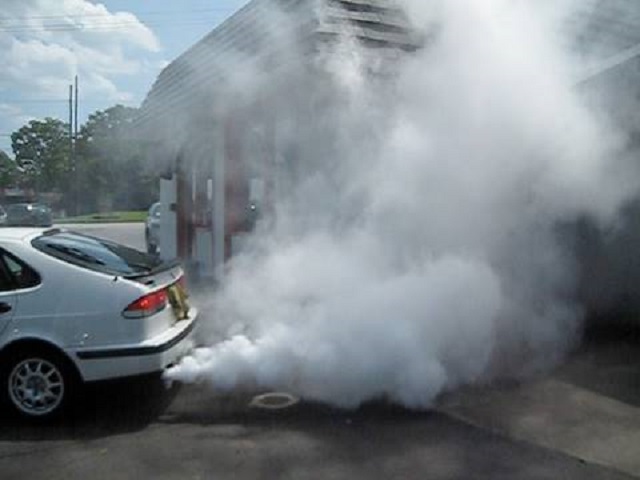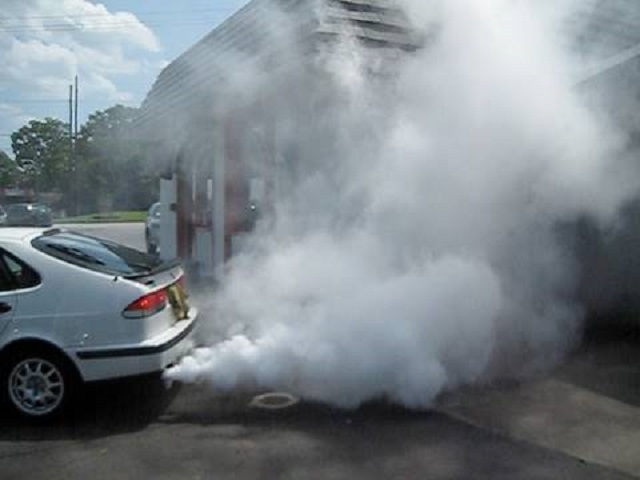
The Sunday News

Lovert Mafukure
In centuries past, smoke used to be a form of communication. Usually to signal danger, pass news or call people to assemble. It is still useful in the motoring industry because it communicates a problem.
Whenever you see smoke coming out of your exhaust, that smoke tells a story, a story that you should listen to attentively.
In a perfect engine, only droplets of water should come out of the exhaust. Fuel and air ratios have to be correct and no foreign liquids should find their way into the combustion chamber or the engine will start coughing out smoke.
A fellow follower is wondering why his car smokes every morning but only in the morning.
We will try to understand why engines smoke in the first place. During winter or on cold days it’s normal to see vapour coming out of the exhaust pipe.
It may look like white smoke. That is normal just like how you breathe out on a cold day and it looks like you are smoking. If the smoke appears on a hot day, however, or every time you start the car then something is amiss. Give your car immediate attention to avoid costlier repairs.
White smoke usually points to an engine burning coolant. Seals and gaskets are there to make sure certain liquids do not mix. When they are worn out, liquids begin to mix and consequently you start having engine problems. White smoke is usually caused by blown head gaskets or worn valve stem-seals. At times it’s a combination of both.
A warped or cracked cylinder head may also cause white smoke because it paves way for coolant to leak or get sucked into the combustion chambers. In the early stages of head gasket failure, one may notice white smoke when they start their car in the morning but the smoke clears after a few minutes.
This is so because when the head gasket or the valve stem seals leak, they allow coolant to flow into the combustion chambers, perhaps overnight as the car is parked and it’s then burnt and comes out as white smoke.
Eventually, such problems worsen and a significant loss of coolant is noticeable. Other problems may arise like overheating and eventually the engine may give in. Coolant may also start leaking into the oil circulation passages. If this happens, a brown or milky tinge will be noticeable when you put out the dipstick or on the oil cap. It’s the same story for the radiator as well, as oil and coolant mix, the lubrication and cooling systems will be affected.
Blue smoke is a clear sign that your engine is burning oil. Usually it’s due to worn piston rings or wear on the cylinders themselves. In most cases, blue smoke also leaves oily residues on the exhaust pipe. When the engine is burning oil, there is usually increased oil consumption and you find yourself adding oil more often than normal.
Under normal circumstances, you do not need to add any oil into your engine. Whenever you find yourself having to top-up before the next service interval, something may be amiss. Worn valve seals can cause blue smoke.
The valves sit right on top of the cylinders and when the seals are worn out, oil leaks into the combustion chambers and burns together with the fuel. Sometimes after a car has been parked for a while, blue smoke is noticeable on start up.
This is usually because oil would have been leaking into the engine while the car was stationery. Sometimes this smoke clears as the engine runs. In some worst cases its continuous smoke but whatever the case may be, it’s a signal to immediately attend to the problem before it’s too late.
Blue smoke can also be caused by poor grade oil that’s too thin and finds its way through the oil rings and scrapers.
Cheap oils sometimes do not save you money; they steal the life of your engine. In some cases you do find that when you change oil with good grade thick oil, the smoke goes away especially on high mileage engines. A smoking engine needs immediate attention, modern cars with catalytic converters can be affected by the bags of soot the engine will be puffing out, even to the point of blocking the exhaust system.
Lastly Black smoke is the result of incomplete combustion. Its asymptomatic to too much fuel being burnt than the air available.
For the engine to run smoothly there has to be the right mixture of air and fuel. This may be caused by a dirty or clogged air filter.
A dirty filter restricts the flow of air. Sometimes a faulty turbo can make a car pass out black smoke, mainly because the engine will be running too rich with a dwindling supply of air. This is most common with diesel engines. Faulty injectors, sensors, worn carburettor jets can all cause black smoke. In most cases, black smoke however, is an easier fix than blue or white smoke. You may not have to open the engine to fix it.
The next time you see smoke, remember white smoke means you are burning coolant or water. Blue smoke means you are burning oil. Black smoke means there’s too much fuel being burnt. Causes are many and varied, a good mechanic will know what to check first and eliminate possibilities one by one.
These are the most common causes of smoke but not all conclusive, if you are not too techy always call your regular reliable car guy to check for you before you make wrong diagnosis. Till Next Time . . . Happy Motoring.
Proudly Brought to you by:
Automart Spares & service Centre — Quality Japanese Salvage Parts & Auto Breakers
+263 772 33 99 38 — [email protected]




